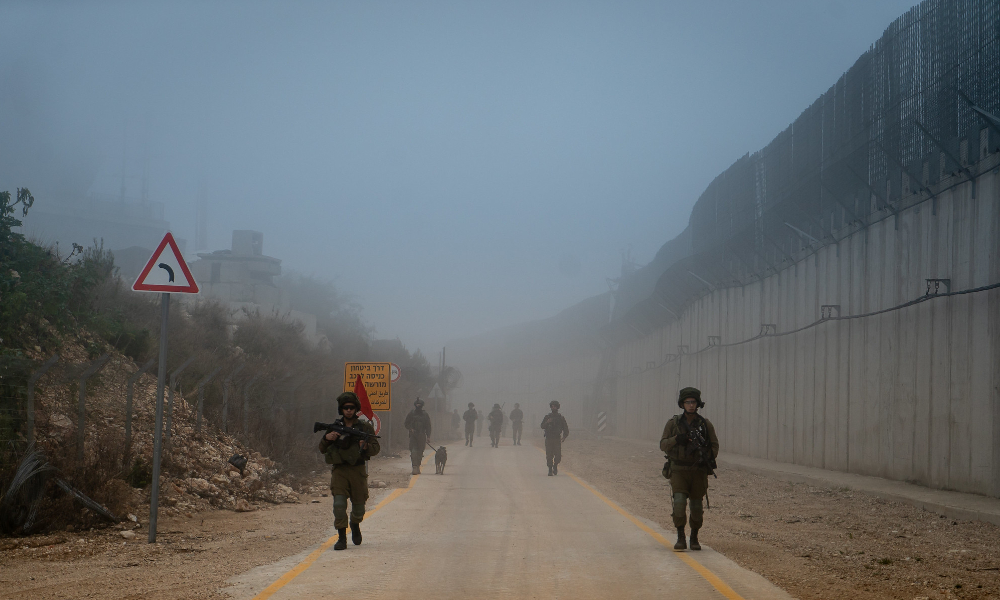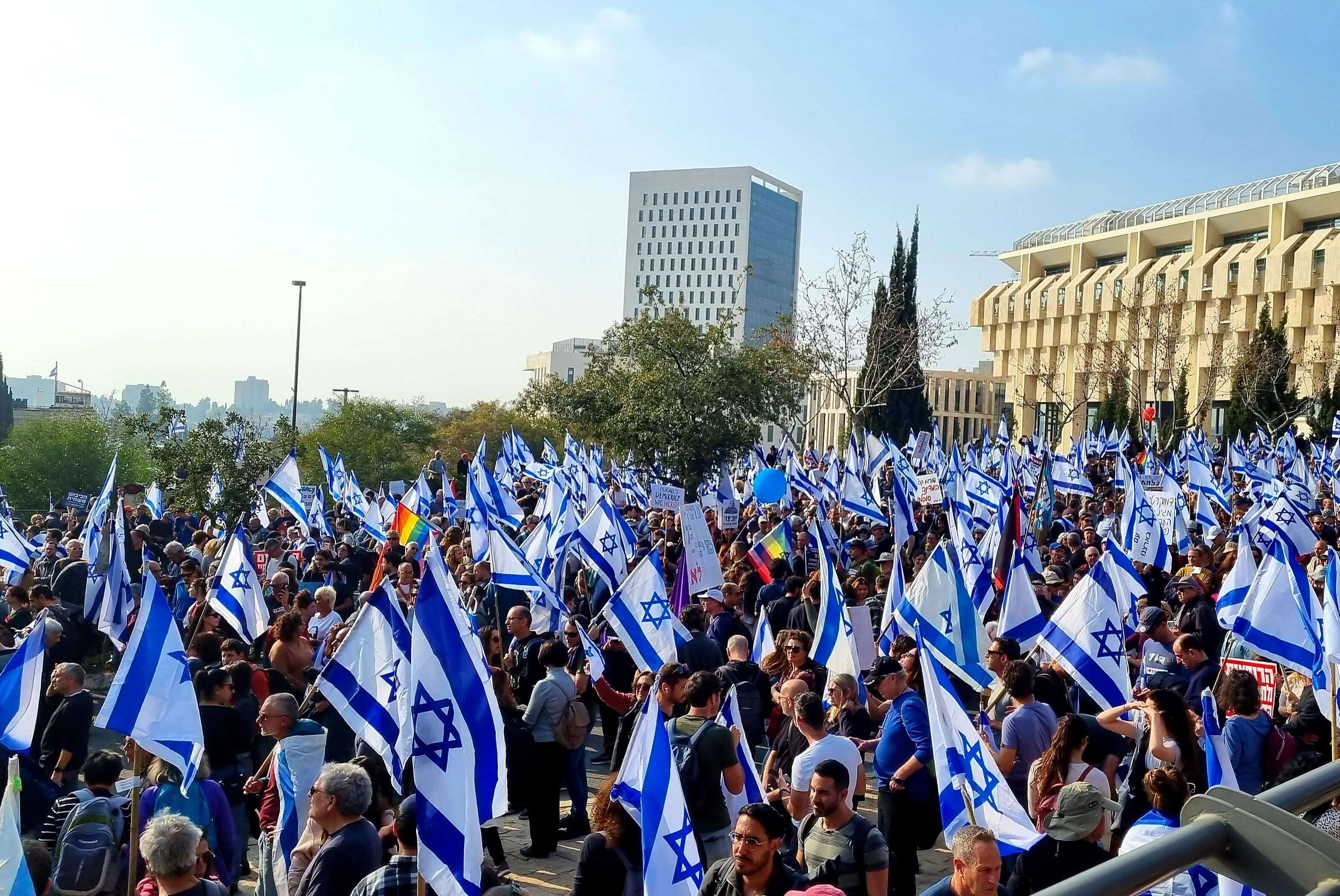Taking the War to Hezbollah: What It Might, and Might Not, Achieve

Published by The Lawfare Institute
in Cooperation With

Editor’s Note: Israel’s campaign against Hezbollah has hit the group hard so far, but victory will be defined by what the situation looks like after the shooting stops. Drawing on lessons from Israel’s poor performance in 2006, the Washington Institute for Near East Policy’s Matthew Levitt calls for Israel to focus on strategic outcomes, in particular, better securing its border with Lebanon.
Daniel Byman
***
In the wake of the Israeli military’s lackluster performance in its last war with Hezbollah, back in 2006, an official Israeli commission of inquiry documented both the shortcomings of the Israel Defense Force’s (IDF’s) tactical performance during the war as well as the “weakness in strategic thinking” that went into the decision to go to war and the development of unclear and unachievable war goals. Named for its chairman, the Winograd commission concluded that the IDF not only went into the 2006 war ill prepared from an intelligence perspective, it then failed to alert the political decision-makers to discrepancies between what it hoped to achieve and what measures policymakers authorized the military to employ on the battlefield.
Fast-forward 18 years, and the IDF is back in southern Lebanon. But this time, Israeli military and intelligence planners are benefiting from years of intelligence collection and the production of an entirely new operational framework, based on an “in-depth critical learning process” directed by IDF Chief of Staff Aviv Kochavi during his tenure from 2019 to 2023. The IDF has clearly implemented lessons-learned when it comes to battlefield tactics targeting Hezbollah. What remains to be seen, however, is whether Israel also remedied the strategic shortcomings of its last war with Hezbollah. While Israel has made remarkable tactical gains in recent weeks, converting these into strategic benefits will be challenging. The Israeli government is eyeing two sets of strategic goals: The first, ensuring that Iran’s primary proxy remains too weak to pose a serious threat to Israeli security, is nonnegotiable. The second, reining in Hezbollah’s influence in Lebanese politics, is largely aspirational. The lessons of the last war can help inform how Israel might achieve these goals and what is beyond the control of Israeli policy.
Getting the Job Done in Operation Northern Arrows
Within the span of a couple of weeks, the Israeli military, acting on information the country’s intelligence agencies have collected over the 18 years since the end of its last war with Hezbollah, carried out a series of attacks that degraded Hezbollah to the point that the group is now a shadow of its former self. From exploding the pagers and radios of Hezbollah operatives to the targeted killing of Hezbollah leader Hassan Nasrallah in the group’s military command headquarters, waves of spectacular Israeli attacks have significantly degraded Hezbollah’s leadership and its operational capacity. There is no denying that Israel has achieved clear tactical goals in its “Northern Arrows” campaign against Hezbollah these past few weeks, demonstrating a level of intelligence dominance even seasoned intelligence operatives found staggering in scope. Somewhere between a half to two-thirds of Hezbollah’s rocket and missile arsenal has reportedly been destroyed, and IDF infantry is aggressively dismantling Hezbollah tunnels and bunkers, killing local operatives and commanders, disrupting Hezbollah financing, and seizing weapons caches along the Lebanese side of the border.
The impact of these tactical achievements should not be understated. It is no exaggeration to state that Hezbollah, the centerpiece of Iran’s Axis of Resistance, no longer exists as we knew it. The group still has thousands of fighters and no shortage of small arms, but the loss of its leadership, command centers, rockets and weapons, and frontline infrastructure along the border with Israel means the group no longer presents a clear and present strategic threat to Israel. It can still shoot rockets and launch drones across the border, but not in volumes necessary to overwhelm Israeli air defenses. It can still carry out acts of international terrorism, but this does not present a strategic threat. If this is all Israel achieves, Israelis will judge the IDF’s air and ground campaigns as having been tremendously successful.
Beyond Tactical Gain, Israel’s Dual Strategic Goals
Israel is pursuing two strategic goals in its war with Hezbollah. First, the Israeli government is committed to frustrating Iran’s strategy of empowering proxies to coordinate incessant and coordinated attacks against Israel. Even now, despite all the pain Israel has inflicted on Hezbollah, the group’s acting leader announced the group was operating based on a “new calculation” that combines calling for a ceasefire with committing to inflict pain on Israel. For Israel, its nonnegotiable goal is to push back on Iranian efforts—together, with, and through its proxies—to impose a new normal on the Middle East in which Israel faces an unrelenting “ring of fire.” Hezbollah has long led the effort to make this concept a reality—Nasrallah talked about “uniting of the fronts” back in 2015—but it took another nine years for the kind of coordinated attacks against Israel that he envisioned then to finally be carried out in 2023. And while the coordination and support Hezbollah and Iran were ultimately willing to provide when push came to shove in 2023 did not live up to Hamas’s expectations, Iran has doubled down on this strategy since Nasrallah’s death, with Supreme Leader Ali Khamenei pledging that “the fate of this region will be determined by the forces of resistance, with Hezbollah at the forefront.” Israel seeks to prevent the perpetuation of a “multi-front war” aimed at the country’s destruction, promising to hit back hard anytime it is attacked, in an effort to reestablish a measure of deterrence against Iran and its proxies.
Over the past year, however, Israel has learned the limits of deterrence and the cost of an overreliance on technology to prevent a well-armed adversary from preparing to one day use those arms to attack Israel. If the past is precedent, Iran will surely seek to bankroll Hezbollah’s recovery and rearm its militia, as it did so successfully following the 2006 war. UN Security Council Resolution 1701 (UNSCR 1701), which was adopted unanimously in 2006 and called for Hezbollah not to be rearmed and not to deploy south of the Litani River, was never implemented. Iran resupplied Hezbollah with exponentially more and more dangerous weapons than the group had in 2006. And despite the deployment of the United Nations Interim Force in Lebanon (UNIFIL) and its 10,058 troops from 50 countries to southern Lebanon, Hezbollah deployed far more forces, and built far more infrastructure, well south of the Litani River all the way up to (and under) the Blue Line itself. Indeed, Hezbollah placed many of its tunnels and rocket firing positions right under UNIFIL’s nose—often within 200-300 meters of UNIFIL positions, prompting some observers to question UNIFIL’s utility and its relevance moving forward.
Second, Israel seeks to follow up on the war’s tactical gains to further undermine Hezbollah’s military position in southern Lebanon and, more broadly, its political position in Lebanon. Perhaps, the thinking in both Jerusalem and Washington goes, Israel’s tactical successes against Hezbollah will have undermined the group’s military strength to the point that the government of Lebanon could deploy the Lebanese Armed Forces (LAF) to finally assert sovereignty over the country, establish a monopoly over the use of force, and sideline Hezbollah as a political and military force in Lebanon.
Lebanon should be “restored to its days of tranquility,” Israeli Prime Minister Benjamin Netanyahu said in a video statement to the Lebanese people. “Stand up and take your country back,” he continued, arguing that because of Israeli actions against Hezbollah, Lebanon now has “an opportunity that hasn’t existed in decades.” U.S. officials also see an opportunity here. “What we want to see come out of this situation,” State Department spokesman Matthew Miller explained, “is Lebanon able to break the grip that Hezbollah has on the country—more than a grip, break the stranglehold that Hezbollah has had on the country and remove Hezbollah’s veto over a president.” In a phone call with Lebanon’s caretaker prime minister, Najib Mikati, U.S. Secretary of State Antony Blinken stressed that “Lebanon cannot allow Iran or Hezbollah to stand in the way of Lebanon’s security and stability.”
But while plenty of Lebanese agree (former Lebanese Prime Minister Fouad Siniora accused Hezbollah of “hijacking” the Lebanese government and held the group responsible for starting the current war), the Lebanese government and the LAF have a long history of avoiding conflict with Hezbollah. Though “relatively few Lebanese support” Hezbollah, according to the 2024 Arab Barometer survey, demanding that Lebanese forces take on Hezbollah writ large may be too much of an ask in the moment, perhaps explaining why the State Department spokesman put this in the category of something the U.S. would like to see done “ultimately” rather than immediately.
Short of this longer-term goal, what can and should be done in the immediate aftermath of the Israeli military operation in southern Lebanon is the full implementation of UNSCR 1701, as it never was implemented before, including a concerted, multinational effort to counter Iranian weapons smuggling and the full deployment of the LAF along the full length of the Israeli-Lebanese border.
Translating Tactical Gains Into Strategic Benefits
Translating Israel’s tactical gains into strategic benefits first requires that Israel not get bogged down in Lebanon. But if, after destroying the military infrastructure and forward-deployed weapons that Hezbollah built up over the past 18 years, Israel completes its sweep of southern Lebanon and leaves, then the first step toward actually implementing UNSCR 1701 is empowering the LAF to fill the vacuum and deploy forces along the entirety of the border. With Russia and China as permanent UN Security Council members, no new, stronger Security Council resolution can be expected, leaving the full implementation and enforcement of UNSCR 1701 as the best remaining option, and one that Israeli officials would support if it were actually enforced. In practice, while individual Hezbollah operatives living in the south are sure to return, Hezbollah should not be allowed to reestablish its own closed military zones, tunnels, and arms caches south of the Litani River. To deploy along the border and patrol the area south of the Litani, the LAF would need to deploy a sufficiently large force and would therefore need to know that Western powers would help equip and underwrite such a mission. For their part, the LAF would only agree to deploy under the umbrella of a ceasefire and diplomatic agreement under which Hezbollah agrees not to redeploy to the border. Israeli officials also reportedly want agreement that Lebanese civilians will be prohibited from approaching the area immediately proximate to the border. Meanwhile, the Israelis will not take Hezbollah’s word to stay out of southern Lebanon at face value and should be expected to carry out surveillance flights on a regular basis and, if necessary, conduct air raids targeting Hezbollah movements south of the Litani River.
To make this work, it is critical to establish a coalition of countries that will leverage the intelligence and military assets necessary to counter Iranian efforts to rearm Hezbollah (and, for that matter, Tehran’s other proxies including Hamas and the Houthis). Iran’s Revolutionary Guards have already indicated this is exactly what they plan to do. For his part, Prime Minister Netanyahu has made it clear Israel will not agree to any ceasefire agreement that fails to prevent Hezbollah from rearming and regrouping. There is no guarantee this will come to pass, but it is within the realm of the possible.
A more aspirational set of goals seeks to displace Hezbollah as a military and political power in Lebanon. The problem here is that while Israel appears to be well on its way toward effectively removing much of the strategic threat Hezbollah has long posed to Israel, this does not degrade Hezbollah’s ability to fight for its position within Lebanon. Hezbollah still has thousands of fighters and no shortage of small arms, which is all it needs to continue intimidating fellow Lebanese who challenge the group. Hezbollah has a history of raising its arms against fellow Lebanese when challenged, and that should not be expected to change. For example, in 2008, Hezbollah took over downtown Beirut by force of arms, and the group still has a dedicated assassination team—Unit 121—to eliminate its Lebanese rivals. Political will aside, nobody in Lebanon will even consider taking on Hezbollah if they fear that the group, though degraded in terms of its ability to fight Israel, can still fight challengers at home.
The first practical step in this direction would be to press Lebanese leaders, in particular Speaker of the Parliament and AMAL leader Nabih Berri, to call a session of Parliament to elect a new president and buck Hezbollah’s two-year-long effort to block any candidate not to its liking. Convening Parliament under international pressure is not likely to produce a violent response from Hezbollah the way attempts to disarm the group would. And Berri has strong incentives to support this measure; with support for Hezbollah low among the Lebanese public, breaking the Hezbollah-imposed stalemate would be a popular measure.
Rereading Winograd in Tel Aviv
Israeli leaders would do well to take a few minutes and review the findings of the Winograd Commission, in particular, those focused on strategic thinking. In deciding to go to war back in 2006, the Winograd Commission determined, “the [Israeli] government did not consider the whole range of options, including that of continuing the policy of containment, or combining political and diplomatic moves with military strikes below the escalation level.” The commission concluded that “this failure reflects weakness in strategic thinking.” Then, as now, the military was left to determine how to translate vaguely worded political directions into military plans to achieve unclear political goals. Today’s objectives, Israeli journalist Ron Ben-Yishai reports, were defined by the security cabinet “in vague terms for political-coalition reasons and, therefore, the IDF, as in every Israeli war, was forced to translate those decisions into concrete terms.”
Israel should continue to press its advantage in the south with the goal of sweeping out Hezbollah’s forward-positioned weapons, tunnels, and bunkers. Meanwhile, it should target Hezbollah’s medium- and long-range rockets, including its precision-guided missiles. But then, having severely degraded the strategic threat from Hezbollah, it should send its soldiers home and focus on diplomatic efforts to enforce UNSCR 1701 in southern Lebanon and to build a coalition to counter Iranian weapons shipments. As for Lebanon taking the opportunity of Hezbollah’s demise to retake the country from Iran’s proxy, Israel may have created that opportunity but only the Lebanese can decide whether or not to grab it. Israel appears to be successfully undoing 18 years of Hezbollah buildup since the end of the 2006 war, but what’s done in Lebanon and beyond once the bullets stop flying and the dust settles will determine whether a new version of Hezbollah emerges over time to present a threat to Israel and to Lebanon itself.





